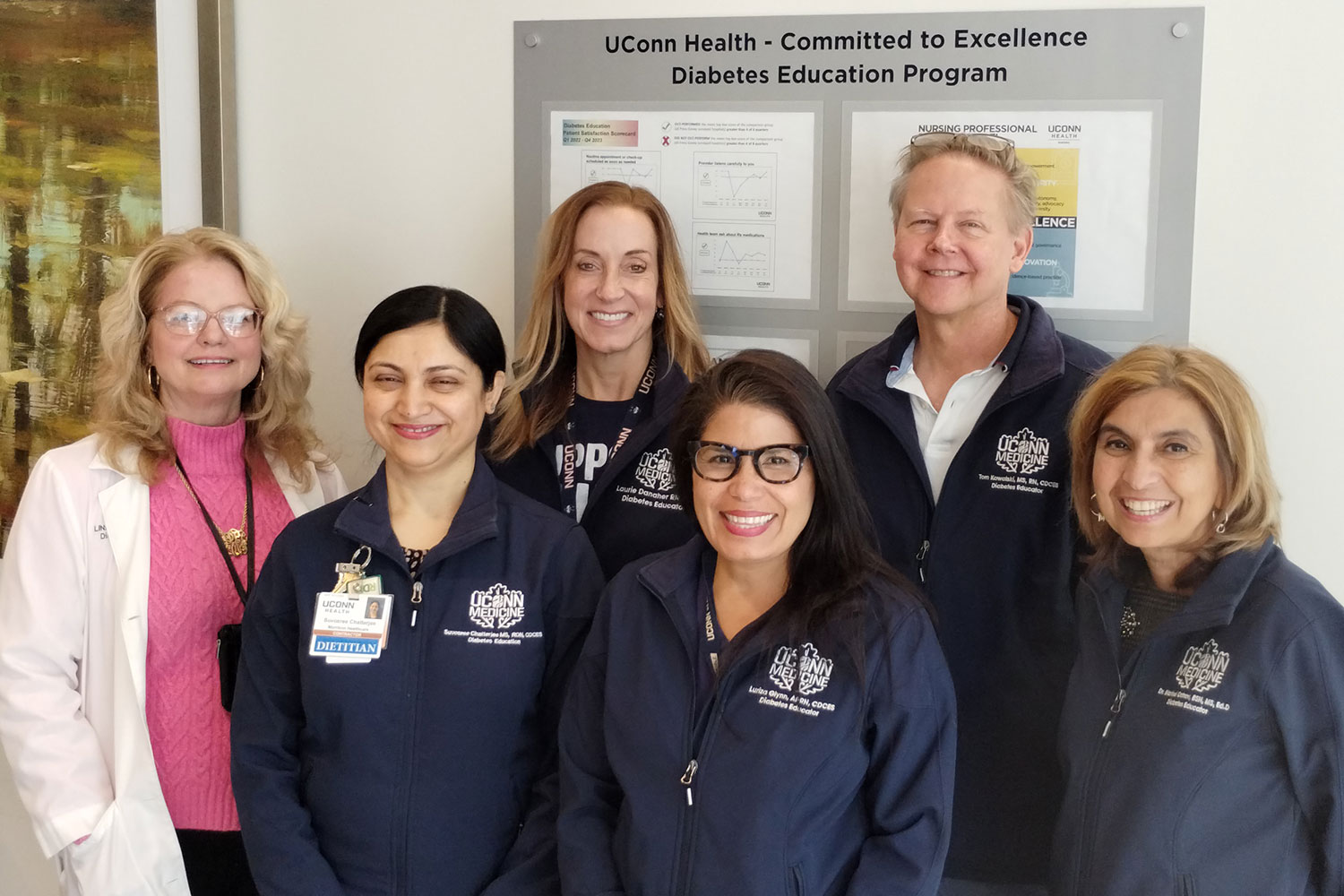UConn Avery Point is the perfect spot to disembark on a tour of the nation’s newest National Estuarine Research Reserve. From the campus, diverse sections of the reserve can be explored and appreciated – places that illustrate Connecticut’s uniqueness and character.
There is nothing “new” about the estuary itself. The brackish waters, islands, and marshes have been part of the landscape for thousands of years. Now, though, the 52,160 acres along Long Island Sound are protected by the National Oceanic and Atmospheric Association (NOAA).
Estuaries are rich areas of brackish water and surrounding wetlands where freshwater meets the sea. Their waters are saltier than freshwater rivers but less so than the ocean, and the resulting ecosystem of life is unique. The Connecticut shoreline estuary now becomes part of the NERR network of coastal sites designated to protect and study estuarine systems, becoming one of only 30 such sites in the nation.
UConn worked with federal, state, and private partners to establish the reserve. The designation ensures that the areas within the estuary are properly cared for by leveraging the existing rules in place for state parks, preserves, and waters of Connecticut.

“We hope that, in addition to its research function, the reserve can serve as a focal point for educating teachers, UConn students, and local municipal officials about the ecosystem services provided by estuaries and the challenges they will face in the coming years,” says George McManus, UConn professor of Marine Sciences and interim manager of the reserve.
Exploring the Reserve
Avery Point makes a natural choice to serve as the headquarters for the administration and research in the reserve. Home to UConn’s Marine Sciences program and to Connecticut Sea Grant, the state and federal partnership devoted to coastal and marine stewardship and education that’s housed in the College of Agriculture, Health and Natural Resources’ Extension Service, the campus lies near the eastern border of the reserve, which extends to Mystic. From here, students can head out on large ships like the R/V Connecticut, a 90-foot steel research vessel equipped with lab space and quarters for 18 people.
On a gray morning in mid-May, Charlie Woods stands at the helm of a much smaller boat, an 18-foot skiff designed for shorter expeditions. Woods is the manager of the Rankin wet laboratory, located near the docks where the marine science program’s fleet is moored. The R/V Connecticut may dwarf the skiff, but the latter is better suited for touring this part of the estuary, and Woods ably navigates away from Avery Point.
The campus lies between the mouths of two rivers. Head west and you enter the busy port in the mouth of the Thames, with Groton on the east bank and New London on the west. Here, you are as likely to spot a nuclear submarine breaching the surface near Electric Boat as you are an egret.
Farther out into Long Island Sound, New London Ledge Lighthouse – subject of many local ghost stories and lore – stands as one of several small lighthouses that dot the path guiding ferries out of the harbor. Woods says on a clear day you can see three different states, with New York’s posh Fishers Island and Rhode Island’s Block Island both visible.
Veer east from the Avery Point pier and it is a far different scene. The mouth of the tiny Poquonnock River serves as the western border of Bluff Point State Park, a popular destination for hikers and their dogs. A few hundred yards from campus lies Pine Island, right next to Bushy Point, another islet within throwing distance of the dock where the skiff disembarked. Many marine birds, including cormorants, egrets, ospreys, and seagulls, dive in and out of the water in search of a meal.

It’s a tranquil scene, interrupted only by the occasional small plane or helicopter that lands at Groton-New London Airport. Beachside homes, docks, and sailboats line the shore along Baker Cove. This is very much a community ready for the summer.
This section is quintessential Connecticut, with the charm of a seaside town just a few miles from a manufacturing center unique to the state. Avery Point and the Lowell Weicker Building, which houses the marine sciences program, is in the middle of it all and is visible from all nearby points.
Potentials for Recreation and Research
For all the biodiversity and commercial activity near campus, the established reserve is far larger than the few square nautical miles traveled during this tour of the estuary. It expands more than 50,000 acres westward, all the way to the mouth of the Connecticut River in Old Saybrook, and many miles north into freshwater.

Recreational opportunities change depending on geography and geology. The coast offers plenty of beaches and state parks for swimming, trails to bike ride and hike, and is a haven for birders. Anglers fish for bass and pike in freshwater upriver or for blues and stripers into the Sound, while clammers explore mud flats in search of their quarry.
The designation as a reserve will not change any of the access for Connecticut residents. In fact, UConn and its partners, such as NOAA, the Connecticut Department of Energy and Environmental Protection (DEEP), and the Connecticut Audubon Society, will increase outreach efforts into communities.
Beyond all the ways that residents can enjoy the reserve, it presents a vital resource for research. Marine Sciences students will study and experiment within the ecosystem and the state foresees educational opportunities for students of all ages to learn about sustainability, climate change, and more.
“We look forward to working with our partners and NERR staff on important efforts and programming such as exploring efforts to sustain coastal habitats in the face of sea level rise and providing more opportunities for school-aged students to participate in real-world scientific field work,” says DEEP Commissioner Katie Dykes.



